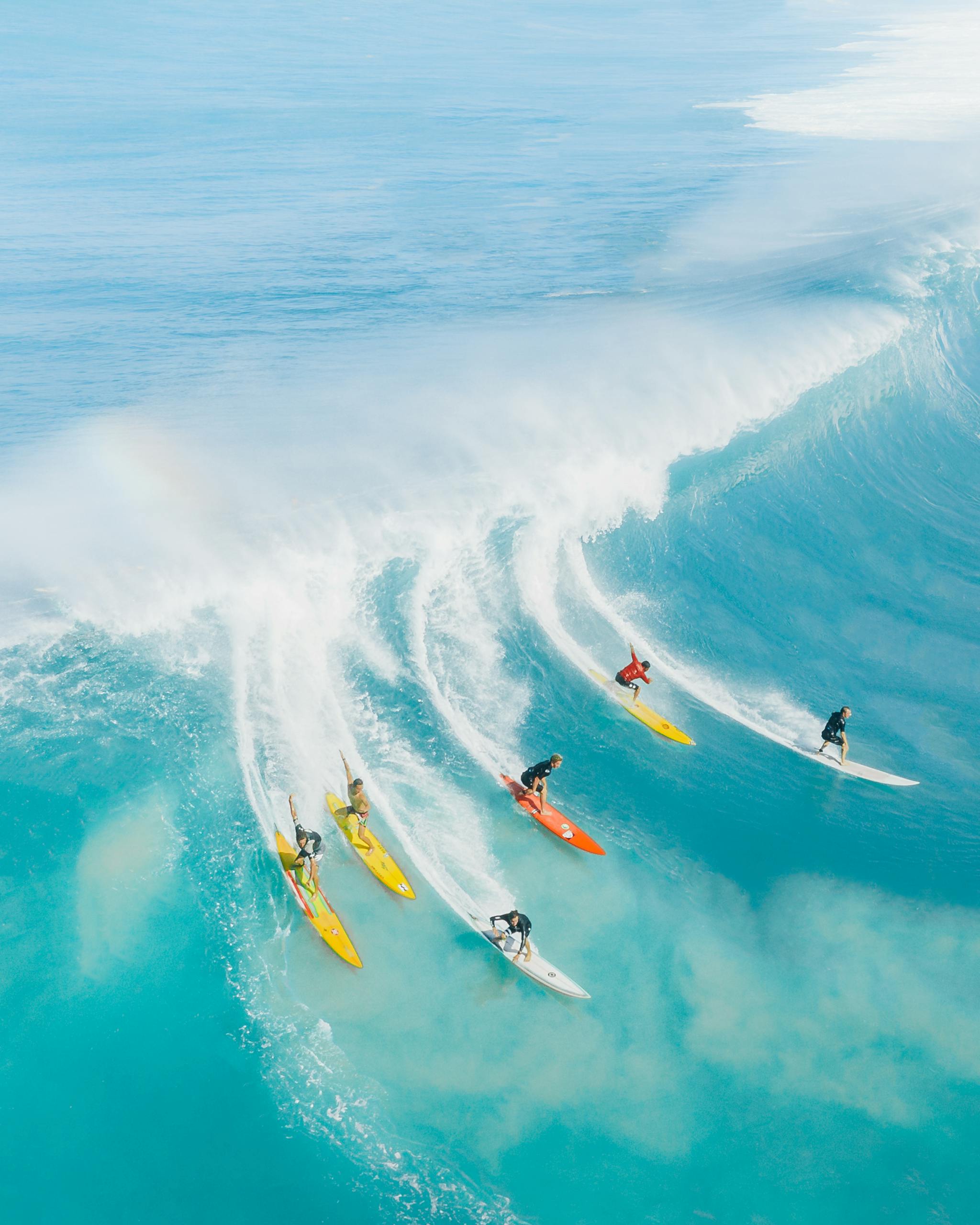The different types of spotlight
Surfing is practised in a multitude of spots around the world, each offering unique characteristics. Understanding the differences between the different types of surf spots is essential if you are to choose the best conditions for your level and preferences.
Reef Breaks
Reef breaks are waves that break over coral or rock reefs. These spots often offer powerful, well-formed waves, ideal for experienced surfers. Famous destinations such as Pipeline in Hawaii and Teahupo'o in Tahiti are reef breaks renowned for their impressive waves and perfect tubes. However, reef breaks also have their hazards, such as sharp reefs, which require a high degree of technical skill and caution.
Beach Breaks
Beach breaks are waves formed on sandy bottoms. These spots are often more accessible and better suited to beginners and intermediate surfers. The waves are generally less powerful and more varied, depending on the tides and sandbanks. Famous beaches such as Biscarosse and Hossegor in France and Huntington Beach in California are emblematic examples of beach breaks, offering a wide variety of waves to suit all levels of ability.
Point Breaks
Point breaks occur when waves break along a headland or rocky point, creating long, consistent waves. These spots often offer waves of exceptional quality and extended ripples, ideal for practising complex manoeuvres. Rincon in California and Jeffreys Bay in South Africa are world-renowned point breaks, attracting surfers from all over the world.
